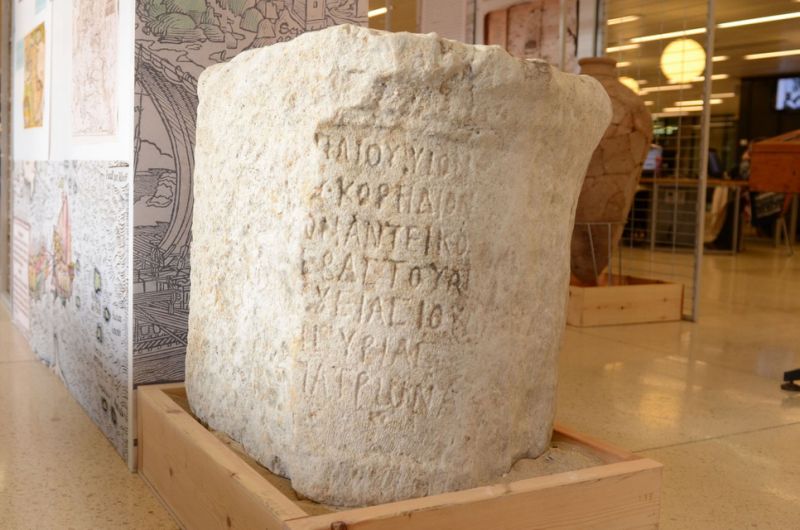
A stone slab found off the coast of Israel dates to the second century A.D., the time Simon bar Kokhba led a failed revolt against Roman rulers. The huge chunk of stone was found at an underwater site called Tel Dor, located about 18 miles (30 kilometers) south of the city of Haifa.
The area was once the Biblical city of Dor, occupied until the fourth century. A whole trove of pottery, anchors and other artifacts from ancient Israel was found here over the last 70 years. Coastal Archaeology Laboratory researchers Ehud Arkin-Shalev and Michelle Kreiser from the at the University of Haifa, found the giant slab when looking in the water of the Dor Nature Reserve.
Even beneath the water the inscription was clearly visible, the researchers said. It was decided to bring the massive, 1,300-lb. (600 kilograms) slab out of the water, to prevent damage to the inscription which included seven lines of ancient Greek.
“The stone probably formed the base of a sculpture from the Roman period. As far as we know, this is the longest inscription found underwater in Israel,” Assaf Yasur-Landau, the University of Haifa archaeologist who led the excavation, said in a statement.
The inscription confirms the name of the province involved in the revolt as Judea, which, until now, no inscription immediately preceding the Bar Kokhba revolt had stated, the researchers said. The inscription also identified the Roman prefect in charge of Judea as Gargilius Antiques.
After the second temple was destroyed in A.D. 70, around A.D. 132, tensions between the Roman rulers of Judea its Jewish inhabitants again boiled over. Simon bar Kokhba led a revolt against the Romans. During the four years of fighting, both sides sustained heavy casualties, and many Jews were ultimately sold into slavery or scattered.
“Immediately after the Bar Kokhba revolt, the Romans decided to abolish the province of Judea and to obliterate any mention of its name. The province was united with Syria to form a single province called Syria-Palestine,” Yasur-Landau said. “So what we have here is an inscription dated to just before Judea ceased to exist as a province under that name. Of the two inscriptions mentioning the name Judea, this is the latest, of course. Because such findings are so rare, it is unlikely that we will find many later inscriptions including the name Judea.”
